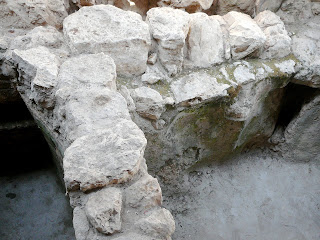




















Summary
We began our first historical tour of Jerusalem by looking at the first time Jerusalem is mentioned in the Old Testament/Hebrew Bible. Reading Judges 19, we discover it was mentioned in the story of the Levite and his concubine. At this time it was occupied by the Jebusites and was known as Jebus – a pagan village relatively unimportant in the grand scheme of things. The location of the Jebusite village was low in the valley, off the main road, and was not a strategic location for self-defense. We learn the reason behind its location is a spring at the base of the valley, which served as the only water source for the village. We are left wondering how this rather remote and provincial “Iowa”-type village became the capital of monotheism and the center of religious hope.
To answer this question we turn to the life of King David – the man who single-handedly chose Jerusalem as the Jewish capital and made it a religious center by having his son Solomon build the First Temple there. David is the archetypical Jewish king and according to Jewish belief, the messiah will be his descendant. However, he is by no means depicted in the Hebrew Bible as a perfect human being. We discussed the story of his relationship with Bathsheva, where he viewed her bathing, took her, and sent her warrior husband off to certain death.
We discussed the selection of the site of the Temple and the fact that is was located on the mountain peak above the City of David (cf., those Psalms that begin with “A song of ascents…”) where tradition records Abraham attempted to sacrifice his son Jacob. Being a man of the sword, David himself was not allowed to build the Temple; that task fell to his son (and daughter of Bathsheva), Solomon, who reigned after him and expanded the fledgling empire.
Why did King David choose Jerusalem? As the second king of the united tribes of Israel, David faced the challenge of ruling over the dispersed tribes from his location in Judah. To gain the favor of the other tribes, while keeping a close distance to his home tribe, David chooses Jerusalem, which is at the very northern border of the territory of Judah and at the time, was outside of their control and thus “neutral”; i.e., he wouldn’t be accused of favoritism toward his own tribe, but yet keep close to his power base. We read 2 Samuel 5:1-10 to hear the account of how David drove out the Jebusites to establish his city – the City of David.
We toured the archeology of the City of David to make sense of some biblical passages such as the story of Bathsheba and the “gutter” passage from Samuel. We then examined how the Jebusites, King David, and later King Hezekiah dealt with the problem of having the spring outside the city walls by constructing underground tunnels and diverting the water into the city and we had the opportunity to actually walk through these tunnels that date back more than 3,000 years and discussed their “discovery” by Western explorers, in particular, the American, Charles Warren, who explored here in the 1860s. We also discussed how Warren’s Pier, a near vertical shaft following a natural fissure down to the larger reservoir, which had previously been thought to comprise a place where the Israelites could let down pails to bring up water, was in fact covered by rubble during this period and so could not have been used in this way.
Our tour of the City of David ended with the half-excavated Siloah pool where Jesus healed the blind man and where Jews participated in ritual bathing before ascending to the Temple. We learned of the conflict that arises due to the presence of Jewish and Christian religious archaeological sites beneath Muslim-owned communities. To better understand this tension we spoke with a man from the Arab town of Silwan near the Siloah spring who is part of an association protesting the presence of Jewish settlers in his neighborhood. His perspective rested on the belief that “to dig a tunnel is to kill a village” and he expressed his reprehension for the idea that “stones are more important than human beings.” Afterwards, Barak explained to us some of the nuances of the situation that lead to a more complex understanding, and again return us to theme of myth and reality in the Holy City.
Highlights of the Tour
-Rachel laughing at herself laughing at reading “asses” from the passage in Judges 19.
-Walking through Hezekiah’s Tunnel.

1 comment:
Great information, pictures and stories. Anymore of these coming soon? Best regards to everyone, and take care all, esp both Erics. We look forward to viewing and reading even more, if time permits.
MM
Post a Comment